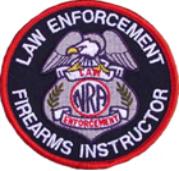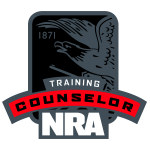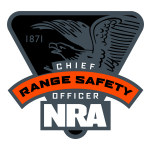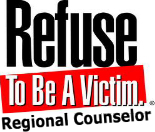What you need to know when you own or carry a Gun for Personal Protection.
First: The only sure way to win in a violent confrontation is to avoid the confrontation altogether.
Second: A gun is a tool of Last Resort. It is not to be used to resolve petty arguments etc, it is only to protect innocent life that is in imminent and immediate jeapody.
When can I shoot in Self-Defense?
As defensive pistol Instructor, an NRA Training Counselor and a personal protection instructor I get this question all the time from my students. The answer is not as clear cut as many would think and greatly differs from jurisdiction to jurisdiction. So I will try to answer this as best I can that may keep you out of trouble and out of jail. Most States, even the most anti-guns states out there allow you to protect your life and the life of your loved ones when it is justified. The question is not if you have authority to defend your life or authority to shoot, the real question is will the local DA or Attorney going to think your actions were justified by using the reasonable person test. He will ask himself if he will be able to convince 12 reasonable people (the jury) that your actions were not justified and will he be able to convince those same 12 people that you acted recklessly or that your actions were excessive or unnecessary?
Yeah, I know; not as easy to answer as one would think since most juries are made up of people with varying opinions, especially about guns. When it comes to juries and trials either criminal or civil nothing is guaranteed. So what does one need to know when carrying a gun for personal protection?
There are four elements to a legitimate self defense shooting and they must all be present simultaneously in order for you to be some-what confident that the DA will not press criminal charges against you. (Although nothing can guarantee that they won’t.)
They are:
- Ability
- Opportunity
- Manifest Intent
- Preclusion
Let me explain each one and how they apply.
Ability – Your attacker must have the ability to seriously injure you (a loved one or innocent person). This usually is in the form of a weapon of some sort but can also be a person with no weapon at all. Not all attackers need weapons to inflict serious bodily injury. Keep in mind that threats alone does not mean the attacker has the ability to injure you. For example, someone in a wheel chair might not be able to carry out a threat unless they have a gun because you could simply out run them, whereas a martial arts expert with no weapon can certain inflict harm. Every situation is different and you have to make these decisions most of the time in a split second. Ask yourself, does he have the ability to cause me serious injury.
Opportunity – At the same time, your attacker has to have the opportunity to inflict serious bodily harm. Where a firearm is usually considered deadly at almost any range, someone with a knife 25 yards away would not be considered to be an immediate threat because of distance. Effective range is a very important factor in opportunity and remember to ask yourself does this attacker pose an “immediate threat”? Is he so far away that I could simply retreat safely, run away, get into my vehicle and drive off? These are all questions the DA is going to ask himself in the decision process of whether to bring criminal charges against you.
Manifest Intent (or Imminent Jeopardy) - You are in "imminent jeopardy" when the attacker indicates, by verbalization or his actions, that it is his intention to kill or seriously injure you, and that he intends to do so now. However, in many cases the attacker may not verbalize that he intends to cause you serious bodily harm, intent of course is a mental process and many times it is how you perceive the actions of your attacker that gives you cause to act in self defense. How do you know he intends to kill you if he doesn’t tell you? Remember the 12 reasonable people we talked about…. Based on the how the attacker was acting, his actions etc… would those 12 people conclude based on his actions that he intended to cause you serious bodily injury – “Perception is everything in this case”. If you have reasonable grounds for believing his intentions are to kill you then you are probably justified in using lethal force to protect yourself. Also, remember that this would include circumstances where the attacker’s weapon turns out to be fake, unloaded etc since you had no reason to believe that it wasn’t, and sometimes a situation arises when a person is acting recklessly with no specific intent to kill you but you could most certainly end up with serious bodily injury or death as a result of his actions. Remember intent is a thought process and is very hard to prove, but if you had reasonable belief of the perceived threat it may be enough to justify your self-defense actions.
Preclusion – Preclusion, simply means that you had no other options available to you and you had to shoot to protect your life and that ALL other options were considered and precluded. The 12 reasonable people on the jury must be persuaded that, under the circumstances, you had no logical or reasonable alternative but to use deadly force to defend yourself. Remember it is good if the jury perceives your actions as restrained, reasonable and agree that you used every reasonable effort to abate the situation. Keep in mind that some states have "mandatory retreat laws" so you need to know the laws in your State and jurisdiction. Generally, mandatory retreat laws apply to every situation, except when the victim is in his own home.
In MOST cases you must not be the initial aggressor. If you started an argument with someone and it turned ugly, or someone started in on you and then retreated but you then went after them, your actions as the initial aggressor or continued aggressor just might land you in jail even if all 4 items above were present or not. You must be the innocent party in almost all cases. The decision to use deadly force always hinges upon a balance of two opposing factors: risk exposure and restraint.
The outcome of criminal or civil court proceedings is often determined not so much by how the law is written, but who can persuade the 12 reasonable people to be sympathetic to their side, and preclusion is often the magic ingredient to acquit you. Juries are sometimes not so reasonable as each side will try to select jury members sympathetic to their side.
The Force on Force Continuum
Whoa, what is that? The Force on Force Continuum is a standard that provides law enforcement officials & security officers (such as police officers, probation officers, or corrections officers etc.) with guidelines as to how much force may be used against a resisting subject in a given situation. The purpose of these models is to clarify, both for officers and citizens, the complex subject of use of force. Simply put it all deals with the escalation of force that a reasonable person can apply in any given situation and again is a factor in your decision making process.
The continuum of force progresses from verbal orders, through physical restraint, non-lethal force such as pepper sprays, tazers etc, up to, and in some cases, lethal force. The general rule for application of force is that only necessary force may be used. When force is applied by an individual (for example, to protect life, or property), the force permissible is only that which is reasonable and necessary under the circumstances.
When a level of force beyond verbal commands is used, you are accountable for the degree of force applied. You are usually legally allowed to use an equal level of force that your attacker is using to protect yourself or others or to end the encounter. In the case of lethal force, other levels of force must have been attempted first unless lethal force is the only way to minimize loss of life or prevent serious injury.
For example, you’re in a bar having drinks with your special lady when a male gentleman comes to your table and begins to harass your lady friend. You tell the guy to beat it and he immediately starts to verbally threaten you, so you draw your firearm and shoot him. This of course would be considered excessive use of force. Having an unbalanced use of force can and will land you in jail since you can only apply the amount of force that is necessary and reasonable to control the situation.
In another example, let’s say you showed restraint and told the guy to get lost and he then left the scene as you requested, but an hour later you’re walking home from the bar, and that same individual jumps out from the shadows and surprises you, you notice he has a knife or what appears to be a knife and he is screaming he is going to kill you.…. in this case you would be justified in using your firearm in self defense since you can use equal force on your attacker, he appears to have a deadly weapon and also has the ability, the opportunity and has stated verbally his intent to kill you. You now use your firearm to defend your life, because you have determined there is no way to retreat safely and there is no time to use or consider other options, you may have a justifiable defensive shooting. Notice I said may have…. Nothing in this game is guaranteed, I have seen jury trials go very wrong very fast and this can happen even if you think you are the one in the right. Most likely that wouldn’t happen if the evidence and witness statements support the evidence, but I need to keep you always thinking about, what if?
Disparity of Force
Deadly force cannot be used unless the victim is in fear of grave bodily injury or death. This usually requires the presence of a weapon. However, sometimes a significant disparity in the strength or fighting ability between the parties is accepted as a substitute weapon. Examples: A man against a woman, A martial arts expert against a normal man. These and other disparities are considered in law, however there are no steadfast guidelines. A 250 pound man vs. a 150 pound man would usually be considered no disparity at all.
Transferred Intent
Transferred intent (or transferred malice in English law) is a doctrine also used in criminal law when the intention to harm one individual inadvertently causes a second person to be hurt instead. Under the law, the individual causing the harm will be seen as having "intended" the act by means of the "transferred intent" doctrine. Simply put if you use your gun to protect your life and you accidentally shoot and innocent by stander, that intent is transferred from your intended target (your attacker) to the innocent victim you killed. In this case you will most likely be arrested and charged for 2nd degree homicide regardless of what the circumstances that transpired between you and your attacker.
Doctrine of Competing Harms
The Doctrine of Competing Harms is a legal doctrine in certain U.S. states that basically allows you to break almost any law on the books if the person believes it to be necessary to avoid imminent physical harm to yourself or another is justifiable if the desirability and urgency of avoiding such harm outweigh, according to ordinary standards of reasonableness, the harm sought to be prevented by the statute defining the crime charged. The desirability and urgency of such conduct may not rest upon considerations pertaining to the morality and advisability of such statute. The Doctrine of Competing Harms also includes homicide in cases of self defense.
Justifiable Homicide
You also have to understand that there really is no law called "Self Defense" and that when you take the life of another human being it will always start out as Homicide.... It is then up to the Attorney General, County Attorney, District Attorney or the jury at your trial to determine if your actions were justifiable under the law. Justifiable Homicide means that you are guilty of homicide but it was justifiable under the law.
The Castle Doctrine
A castle doctrine is a legal doctrine that designates a person's abode (or, in some states, any legally-occupied place [e.g., a vehicle, workplace, hotel room or other temporary dwelling]) as a place in which that person has certain protections and immunities permitting him or her, in certain circumstances, to use force (up to and including deadly force) to defend themselves against an intruder, free from legal responsibility/prosecution for the consequences of the force used. Typically deadly force is considered justified, and a defense of justifiable homicide applicable, in cases "when the actor reasonably fears imminent peril of death or serious bodily harm to him or herself or another".
Stand Your Ground Law
A stand-your-ground law is a type of self-defense law that gives individuals the right to use deadly force to defend themselves without any requirement to evade or retreat from a dangerous situation. It is law in certain jurisdictions within the United States. The basis may lie in either statutory law and or common law precedents. One key distinction is whether the concept only applies to defending lawfully occupied locations. Under these legal concepts, a person is justified in using deadly force in certain situations and the stand-your-ground law would be a defense or immunity to criminal charges and civil suit. The difference between immunity and a defense is that an immunity bars suit, charges, detention and arrest. A defense, including an affirmative defense, is a fact or set of facts that may avoid or mitigate the adverse legal consequences of the defendant's otherwise unlawful conduct.
Forty-six states in the United States have adopted the castle doctrine, that a person has no duty to retreat whatsoever when their home is attacked. Twenty-two states go a step further, removing the duty of retreat from other locations outside the home. Such "stand your ground", "Line in the Sand" or "No Duty to Retreat" laws thus state that a person has no duty or other requirement to abandon a place in which he has a right to be, or to give up ground to an assailant. Under such laws, there is no duty to retreat from anywhere the defender may legally be. Other restrictions may still exist; such as when in public, a person must be carrying firearms in a legal manner, whether concealed or openly.
Use of Firearm to Protect your Property.
Another subject that is asked all the time is can I use my firearm to protect my property? The simply answer here is Yes and No. Wait, what? Exactly, again every circumstance requires analysis, restraint and good judgment on your part always thinking about those 12 reasonable and sometimes not so reasonable people on the jury. In almost all cases and in most states you cannot shoot someone to protect property. For example, you’re at the mall and you observe someone stealing your vehicle, are you justified in using deadly force to stop him; absolutely not, are you justified in brandishing your firearm in order to prevent it, this however is dependent on laws in your jurisdiction – so it is very important to know the laws in your state and your particular area. Some States consider brandishing a firearm as deadly force where others do not, but remember whenever you brandish your firearm; your life might change forever. In my opinion, it is almost never a good idea to use your firearm in the protection of property and simply call the police, be a good witness and let them handle it.
Some instructors use the Shark Tank example to simplify this and it goes something like this. Your son falls into a shark tank filled with hungry sharks, would you jump in to save him? Of course you would, now consider that you dropped your very expensive $600 watch into the same tank. Would you jump in the tank to retrieve your watch? Probably not since $600 is really not worth losing your live over.
What about if someone is in your house and robbing you? Good question and another topic that needs to be addressed. First let me say that many states have Castle Doctrines that protect home owners in these cases, however you still do not want to shoot an unarmed man or someone who does not pose a threat to you. Just because they are in your house without your permission does not give you the justification to shoot them. Many of these situations can be handled and/or defused without ever firing a shot by verbal commands such as “GET OUT, I have a gun and I will protect my family, the police are on their way”. I always tell my students not to go looking for intruders in your house because many times they have the tactical advantage in your own home. You have no idea where they are, how many there are or what weapons, if any they may have. It is better to barricaded yourself in a safe room such as your bedroom etc, call the police and simply protect the entrance to the room – giving you the tactical advantage, or if possible get out of the house and call the police, remember your property is replaceable, your life is not.
If you do find yourself in a situation where you do have to shoot an intruder in your house you must first verify your target or least make every effort to do so….. you just don’t know if it might be your son surprising you coming home from college or an alzheimer’s patient from down the road who meant you no harm, and these kind of incidents do happen. That’s why verbal commands and verifying your target is critical even in your own home. A court defense for shooting an intruder in your home is much easier to win then if you were out in public and even easier if you show restraint before you shoot. You cannot shoot someone who means you no harm – even in your own house the 4 elements mentioned above apply. In many cases you will not even be arrested if you follow the rules, unless the police or DA suspects deception, tampering with evidence etc. Under no circumstances should you ever tamper with the scene, police your brass, touch the body, rearrange the furniture or whatever…. Simply watch your intruder from a safe distance to insure he does not become a threat again and try to calm down as much as you can until police arrive.
Protection of Others not Known to you?
Life has a way of dropping us into situations that we really don’t want and sometimes they are not always what they appear to be. In many states you are also allowed to protect the innocent with your firearm as well as yourself and your family. You may find yourself in a situation where you assume who the innocent party is, but how do you know for sure without all the facts leading up to the event.
For example, you’re walking along the street at night, and you turn the corner and observe 3 men in what appears to be some type of altercation with a smaller man. Your instincts are to draw your firearm to end the confrontation and help the smaller man – The 3 men stop the altercation and the smaller man runs from the scene. Wow you’re a hero right?
You soon then discover after the smaller man is long gone, that the 3 guys are in fact off duty police officers who were trying to subdue the man for a crime he committed a few minutes earlier that the officers had witnessed. Ouch! Moral of the story, is be certain before you take action that you know the situation and have thought out your actions to not only protect the innocent but yourself from using your firearm in defense of the wrong person. Simple fact is sometime you might have to go with your gut instincts, surmise the available evidence and decide to take action or decide not to take action based on the information you have available at the time.
When is enough, enough?
What I mean here is when do you stop shooting, when will a jury consider it excessive and should I even worry about it. Well again, no clear cut definitive answers here. You shoot to STOP THE THREAT is about all I can tell you. If you do find yourself in a defensive shooting you will shoot to stop the threat, that may be two shots, it maybe ten. Remember, it is nothing like you see in the movies where the cop shoots someone and you see the perpetrator driven back by the blast of the gun, haha, it makes for good TV but it’s not how things happen in the real world.
In reality, you will experience many things in a high stress situation including an adrenaline rush, diminished fine motor skills, higher pain threshold, auditory exclusion, tunnel vision etc…. and the fact is so will the perpetrator, so in reality you might shoot him 3 times and he might not even realize he has been hit because of the adrenaline rush and the higher pain threshold he is experiencing. This means he might not stop the attack until his body basically shuts down from lack of blood or oxygen, until that happens you will just not know if you in fact placed your shots in the zone that will stop him. It might take 30 seconds or more for his body to literally shut down even if your shots are center mass. So there’s your answer…. And that is stop the threat if it takes two or ten.
The aftermath of an event or shooting:
So what happens after the shooting or an event where I needed to brandish my firearm in self defense? Again it depends on the situation, but always call the Police to report the event, even in cases where you brandish your firearm and your attacker runs from the scene. You might think that’s it over, but what you don’t realize is the attacker maybe around the corner calling 911 saying you pulled a gun on him. Always try to be the first to call. When the Police arrive tell them the facts, point out any evidence, witnesses etc – don’t ever boast or embellish the situation. Running off at the mouth might get you into more trouble since everything you say can and WILL be used against you…. State the facts, the evidence and the witnesses, that’s it! In cases where you actually shot someone in self defense, call the police and notify them of your location, state that you were afraid for your life and you were forced to defend yourself. Please send an ambulance right away. Call your attorney right away (good idea to know who that is ahead of time), do not talk to anyone without your attorney. When the police arrive, he attacked me, I will sign a complaint, there is the evidence, those people are witnesses, I want to talk to my attorney before I make any further statements and I do not consent to any searches.
The US Concealed Carry Association has a card they give to their members that is intended to hand to police when they arrive, it simply states;
“If I have given this to you, it has been necessary to take actions to defend innocent life. I am willing to sign a criminal complaint against the perpetrator(s). I will point out witnesses and evidence. As you may have experienced yourself, this is a stressful and traumatic experience for me. Therefore, I wish to make no further statements until I have contacted an attorney and composed myself. I also do not consent to any searches; I will cooperate fully once I have consulted with an attorney and calmed down. As a lawfully armed citizen I ask for the same courtesy that you would show a fellow officer who was involved in a similar situation. Thank you for understanding.”
Self Defense Insurance?
Now I know what you’re saying, this is a lot to think about and you’d be right, especially where most of these situations happen in seconds and without warning. But you have to let your training, instincts and visualization techniques help you make those split second decisions – that is why we train all the time. However, if you ever do find yourself in the middle of building a defense for court you will quickly learn that it is very expensive to defend yourself especially when there is a shooting and firearms are involved. Lawyer fees, bail money, expert witnesses etc can cost exorbitant amounts of money and depending on the charge can bankrupt your family very quickly just to prove your innocents, and you may have to do it in both Criminal Court and Civil Court.
Some people purchase Self Defense Insurance just for this reason and this article is not about whether that is a good idea or not, although some prosecuting attorneys will certainly argue that you purposely went out and purchased insurance, so you must have certainly planned on shooting someone. Again, everything is in how it is perceived. If you do want to purchase this kind of insurance or at least know there is help out there if you ever did get into trouble…. I‘ve listed some below.
The National Rifle Association endorsed insurance. Provided by Lockton Insurance.
http://www.locktonrisk.com/nrains/defense.htm
Armed Citizens' Legal Defense Network, Inc.
http://www.armedcitizensnetwork.org/home
United States Concealed Carry Association owned by Delta Defense, LLC
https://www.usconcealedcarry.com/
The NRA Civil Rights Defense Fund may also be an option to help!
http://www.nradefensefund.org/
In conclusion
Keep in mind that I am not a lawyer and this article is not intended for you to use a steadfast legal guide to the carrying of a firearm. As stated many times, every state and jurisdiction is different so I highly suggest you consult a lawyer or take a class concerning firearms and the law in your area. Of course there is a lot more to consider when it comes to law, justification, common law, statutory law, crime scene investigation and physiological effects before during and after a shooting.
Above I have briefed you only in the basics in an attempt to make you think, and for you to try to make as many decisions in advanced as possible because when faced with a high speed, high stakes violent encounter you will have seconds to make a 1000 decisions, where in reality you will have time to make probably one or two… so the more you train, the more you plan, visualize your actions etc the better decisions you will be able to make in real life situations. Training in all forms are helpful whether it be dry fire exercises at home, practice at the range, IDPA shoots, force on force training, simunitions, law classes etc…. never stop training and by all means, stay safe.
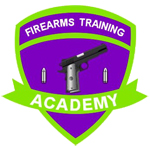

 With the recent surge of firearms sales after Sandy Hook & San Bernardino etc, we have also seen a huge influx of new firearms instructors and training academies. But buyer beware, not all instructors or so called academies are created equal and some can actually get you hurt or even get you in trouble with the law.
With the recent surge of firearms sales after Sandy Hook & San Bernardino etc, we have also seen a huge influx of new firearms instructors and training academies. But buyer beware, not all instructors or so called academies are created equal and some can actually get you hurt or even get you in trouble with the law.  5. TEACHING STYLE - What kind of instructor are they, as they all have their own teaching style, some get off track easily, some over teach and some under teach. Most firearms classes are objective based which means all students should have that particular lesson down before the instructor moves on to the next lesson. Does the Instructor make sure of this, does he encourage questions be asked at any time, does he ask you if you have any questions. Does he make the class fun, does he stay on topic ~ man, I have seen instructors where at the end of the day you actually know more about the instructor then you do about what you came to learn.
5. TEACHING STYLE - What kind of instructor are they, as they all have their own teaching style, some get off track easily, some over teach and some under teach. Most firearms classes are objective based which means all students should have that particular lesson down before the instructor moves on to the next lesson. Does the Instructor make sure of this, does he encourage questions be asked at any time, does he ask you if you have any questions. Does he make the class fun, does he stay on topic ~ man, I have seen instructors where at the end of the day you actually know more about the instructor then you do about what you came to learn. 10. FIRST AID TRAINING - None of us like to think that something could go horribly wrong and we get hurt in a class. I'm not trying to scare you and I must say that range accidents are actually very rare, but they do happen. This is another area that a good instructor understands and takes steps for, this means they have taken the time to get certified in Emergency First Aid, CPR and AED. Remember that anything can happen on the range, not just gun shot wounds but heart attacks, strokes, broken ankles, bee stings etc... it's nice to know that the instructor is ready for anything and actually has a plan to deal with emergencies of any kind.
10. FIRST AID TRAINING - None of us like to think that something could go horribly wrong and we get hurt in a class. I'm not trying to scare you and I must say that range accidents are actually very rare, but they do happen. This is another area that a good instructor understands and takes steps for, this means they have taken the time to get certified in Emergency First Aid, CPR and AED. Remember that anything can happen on the range, not just gun shot wounds but heart attacks, strokes, broken ankles, bee stings etc... it's nice to know that the instructor is ready for anything and actually has a plan to deal with emergencies of any kind. 13. DIVERSITY - Another important aspect is diversity of your instructor. As you may soon learn when you start taking classes is that a firearm is a tool of last resort and you can only use that tool when your life is threatened with death or grave bodily injury. On top of that is the fact that many situations that require you to protect yourself, happens in a split second and many times you cannot get to that gun to protect yourself, so you have to know how to use other tools and techniques. Prevention is also the best way to stay alive since avoiding a gun fight in the first place is the best way to win a gun fight. So you also need to know situational awareness, avoidance and deescalation techniques and much more. Does your instructor know this is kind of stuff or offer other classes such as pepper-spray classes, situational awareness, some hand to hand techniques. Remember your gun is a tool of last resort so you cannot always go straight for that gun, there many things you need to know and understand legally and escalation of force is not something you want to learn by trial and error.
13. DIVERSITY - Another important aspect is diversity of your instructor. As you may soon learn when you start taking classes is that a firearm is a tool of last resort and you can only use that tool when your life is threatened with death or grave bodily injury. On top of that is the fact that many situations that require you to protect yourself, happens in a split second and many times you cannot get to that gun to protect yourself, so you have to know how to use other tools and techniques. Prevention is also the best way to stay alive since avoiding a gun fight in the first place is the best way to win a gun fight. So you also need to know situational awareness, avoidance and deescalation techniques and much more. Does your instructor know this is kind of stuff or offer other classes such as pepper-spray classes, situational awareness, some hand to hand techniques. Remember your gun is a tool of last resort so you cannot always go straight for that gun, there many things you need to know and understand legally and escalation of force is not something you want to learn by trial and error.

